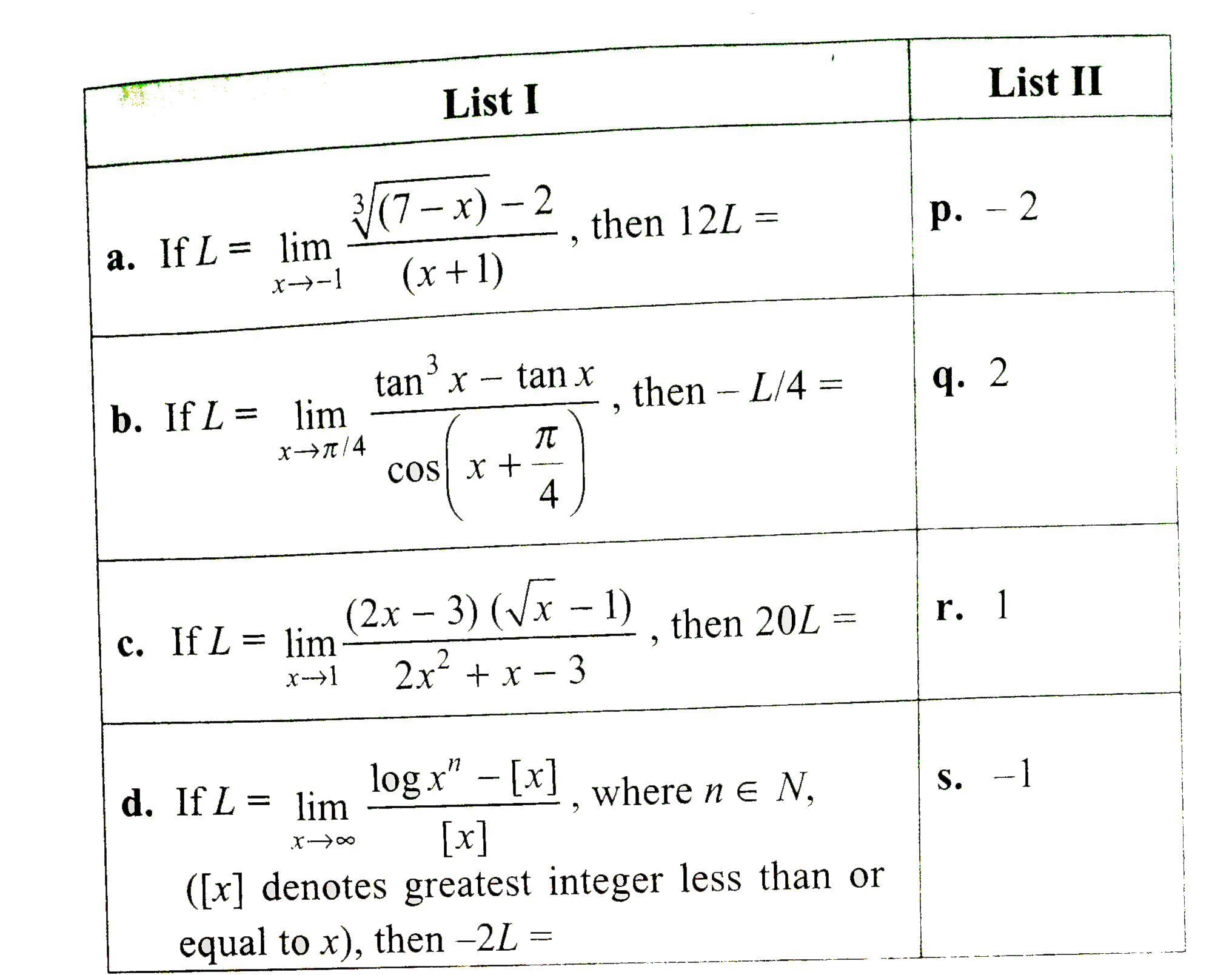If then find the value of Solution in Tamil
The correct Answer is:
or
or
Now,
Topper's Solved these Questions
- BOOK - CENGAGECHAPTER - LIMITSEXERCISE - JEE Main Previous Year8videos
LIMITS
- BOOK - CENGAGECHAPTER - LIMITSEXERCISE - JEE Advanced Previous Year7videos
LIMITS
- BOOK - CENGAGECHAPTER - LIMITSEXERCISE - Exercise (Matrix)5videos
LIMITS
- BOOK - CENGAGECHAPTER - JEE 2019EXERCISE - Chapter 109videos
JEE 2019
- BOOK - CENGAGECHAPTER - LINEAR COMBINATION OF VECTORS, DEPENDENT AND INDEPENDENT VECTORSEXERCISE - DPP 1.210videos
LINEAR COMBINATION OF VECTORS, DEPENDENT AND INDEPENDENT VECTORS
Similar Questions
Let f:R→R be a positive, increasing function with
limx→∞f(3x)f(x)=1. Then limx→∞f(2x)f(x) is equal to03:55View SolutionIf limx→0[1+xln(1+b2)]1/x=2bsin2θ,b>0, and θ∈(−π,π], then the value of θ is
04:45View SolutionMatch the following lists:
 03:56View Solution
03:56View SolutionIf y = y(x) is the solution of the differential equation, xdydx+2y=x2 satisfying y(1) = 1, then y(12) is equal to
06:06View SolutionThe number of integral values of p for which (p+1)ˆi−3ˆj+pˆk,pˆi+(p+1)ˆj−3ˆk and −3ˆi+pˆj+(p+1)ˆk are linearly dependent vectors is q
02:38View SolutionWhich of the following limits tends to unity? (a)(lim)x→0sin(tanx)sinx (b) (lim)x→π2sin(cosx)cosx (lim)x→0sinex−1x (d) (lim)x→0√1+x−√1−xx
02:20View SolutionWhich of the following is and determinate form (lim)x→1x3−1x−1 b. (lim)x→0(1+x)1/x c. (lim)x→1(1x2−1−1x−1) d. (lim)x→0(|x|)s∈R
05:04View SolutionIf f(x)=x(e|x|+[x]−2|x|+[x]) then (where [.] represents the greatest integer function) (lim)x→0+f(x)=−1 b. (lim)x→0−f(x)=0 c. (lim)x→0□f(x)=−1 d. (lim)x→0□f(x)=0
03:53View SolutionEvaluate: (lim)x→01−cosmx1−cosnx
01:50View SolutionEvaluate: (lim)x→02x−1√1+x−1
05:04View SolutionEvaluate: (lim)x→0 (1+x)1x−e+12exx2
03:51View SolutionGiven a real-valued function f such that f(x)=⎧⎪ ⎪⎨⎪ ⎪⎩tan2{x}(x2−[x]2)√{x}cot{x},forx<0,fx>0 Where [x] is the integral part and {x} is the fractional part of x, then (lim)x→0+f(x)=1 , (lim)x→0−f(x)=cot1, cot−1((lim)x→0−f(x))2=1, tan−1((lim)x→0+f(x))=π4
05:23View SolutionGiven (lim)x→0f(x)x2=2,where [.] denotes the greatest integer function, then (A) (lim)x→0[f(x)]=0 (B) (lim)x→0[f(x)]=1 (C)(lim)x→0[f(x)x] does not exist (D)(lim)x→0[f(x)x] exists
04:47View SolutionIf f(x)=x(e|x|+[x]−2|x|+[x]) then (where [.] represents the greatest integer function) (lim)x→0+f(x)=−1 b. (lim)x→0−f(x)=0 c. (lim)x→0□f(x)=−1 d. (lim)x→0□f(x)=0
01:37View SolutionWhich of the following limits tends to unity? (a)(lim)x→0sin(tanx)sinx (b) (lim)x→π2sin(cosx)cosx (c) (lim)x→0sinex−1x (d) (lim)x→0√1+x−√1−xx
03:47View SolutionWhich of the following is and determinate form (lim)x→1x3−1x−1 b. (lim)x→0(1+x)1/x c. (lim)x→1(1x2−1−1x−1) d. (lim)x→0(|x|)s∈R
05:49View Solution

